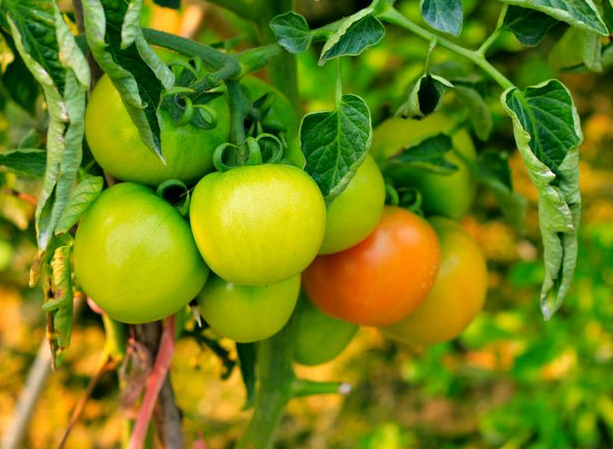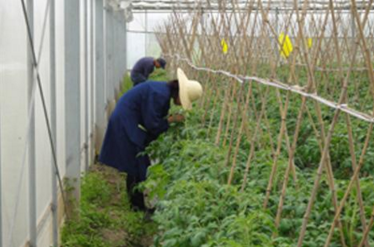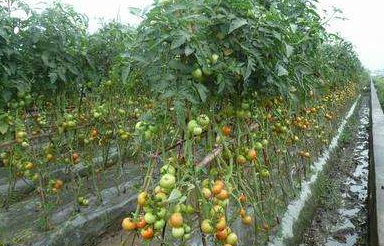Key points of early maturing tomato cultivation techniques
Tomato is rich in nutrients, delicious and delicious. It is one of the most economical fruits of the solanaceous vegetables in the off-season growth and sales. Due to the inherent growth habits of tomatoes and the changes in the four seasons, the production and supply of tomato in the off-season is insufficient. In order to solve this problem, it is necessary to vigorously implement protective production, and carry out hotbed seedlings in Weining, Guizhou, and cover the field with a film, which can be listed 40 to 50 days earlier than conventional planting. The main points of early maturing tomato cultivation techniques are as follows.
Variety selection
The growth habit of tomato is not warm and cold, and it is not heat-resistant. Therefore, high-yield and high-resistance varieties with early maturity and low temperature resistance, such as Zaofeng and Qiangfeng, should be selected.

Seedbed (hotbed) construction
Choose a plot with a leeward sun, a good water source, convenient drainage and irrigation, and loose soil for easy management. The seedbed is fermented with organic fertilizer and covered with a plastic film small arch shed to achieve the effect of temperature increase and heat preservation. Specific method: Excavate the bed pit with a width of 1m, a length of less than 10m and a depth of 0.4m (put the loam on the bedside before excavation). The fertile cows, horses, etc. are mixed with human excrement in the bed pit. After the compaction, it is about 20cm below the bed of the seedbed. After covering a thin layer of soil, the seeds are evenly sprinkled, and then the appropriate amount of fine soil is covered. Then water to the seedbed to wet, spray disinfectant (usually with 1% lime water). The bamboo pole is used as an arch to cover the plastic film.
Sowing at the right time
Generally, the seedling period is about 60d, and it is planted in late February. Therefore, the sowing period is suitable in late December.

Seedbed management
Temperature management pay attention to the daily temperature and the temperature of the shed. The temperature in the shed must be kept above 2 °C (frozen damage below 2 °C). When the winter is cold, the heat generated by the heat in the bed can not guarantee the temperature inside the shed is more than 2 °C, so the straw curtain must be covered (the grass curtain is about 10 cm thick). ) and using warming measures such as electric lights to ensure that tomato seedlings are not affected by freezing.
Moisture management should be watered at the right time to keep the seedbed moist, so as not to cause the seedlings to grow. Also pay attention to clear weeds.
The planting period of fake planting and seedling tomato is easy to grow, and the seedlings are weak and tender, prone to disease and freezing damage. After planting, they are not resistant to bad weather and slow to restore growth. Therefore, the seedling period must be prevented from growing, and the method is to take low temperature false planting and refining. Implantation: After the cold winter, the size of the seedlings grows, and the dense seedlings are planted. Refining: Before the tomato is planted, the sheds are ventilated for 5 to 6 days at both ends of the shed, and then the film is smelted for 5 to 6 days.

Field management
The land preparation and application base tomato planting plots require micro-acid soil with convenient irrigation and drainage, good ventilation and strong fertility, and the plow is 20~30cm thick. The straw and weeds are removed before the hoe, the fine soil is smashed, and the deep ditch is high. Ridge, nest. The application amount of tomato base fertilizer: soil-fertilizer 75000~150,000kg/hm2, circle fertilizer 22500~30000kg/hm2, sludge 150000~225000kg/hm2, human excrement 15000~22500kg/hm2, potassium sulfate 150~300kg/hm2, calcium-plating 300~375kg /hm2. After the nest, the fertilizer is 30000kg/hm2, and the three-element compound fertilizer is 1500kg/hm2. Pour the bottom of the water.
The planting density of early-maturing tomatoes in the field is generally 22,500-27,000 plants/hm2. In the area of ​​Kwadu River in Jinzhong Town, Weining County, the cultivation standard is 130cm×60cm, the belt distance is 130cm, the plant spacing is 60cm, the double nest is wrong, and the plant is planted at a density of 25,500 plants/hm2.
Topdressing tomato is a vegetable with successive growth results. It requires a large amount of fertilizer. In addition to applying a large amount of base fertilizer, it needs to be topdressed 5 to 6 times during growth. Apply freshwater fertilizer once every 5 to 6 days after planting to promote the growth of the seedlings, depending on the growth of the plants. Early fertilization of early-maturing varieties does not cause long-term fertilization. During the growth period, the topdressing fertilizer is mainly based on freshwater fertilizer (clear water or urea water), and P and K fertilizers are added during the fruiting period.
Proper drying of the soil in the early stage of water tomato growth can promote the deep development of the root system. In the flowering period, the soil should be kept moist, and the soil is too dry to cause umbilical rot. Therefore, it should be irrigated and drought-proof in the early stage. Before flowering, the soil moisture should be maintained at more than 70% of the maximum water holding capacity in the field, and the result period should be maintained at 80%.
When the height of the tomato plant exceeds 30cm, the stand should be tied to the vine. Each plant uses about 2m of bamboo poles. The bamboo poles used by the two adjacent plants in each ditch are closed together, and each frame is connected by a horizontal bamboo. Reinforce to prevent wind from falling. Tomato leaf axils can extract side branches. When the side branches are seriously affected by ventilation and light transmission, some side branches must be removed in time to ensure the ventilation and light transmission conditions of the tomato and the yield and quality of the fruit.
In the seedling stage, attention should be paid to trapping small tigers, cockroaches, or insecticides such as enemy killings sprayed on the roots of seedlings to prevent biting or biting the base of the stem. When the ventilation and ventilation are poor, the tomato is prone to gray mold or black heart. During the growth period, 0.4% lime water is sprayed every 7-10 days.
Tomato harvested at the right time can be divided into green ripening period, color changing period, maturity period and ripening period with different maturity. The maturity period is the best harvesting period of tomato. Because the ripening fruit is more than 80% red or fully colored, the meat quality is still solid and the flavor is the best. It is the suitable period for the supply of fresh fruit market. If it is necessary to mention the morning market and sell to the field, or to ease the pressure of concentrated listing during the fruit period, the harvesting period should be in the color change period, and it is appropriate to use auxin to redden.
A Foot Spa Machine with heat is a device used to provide a relaxing and therapeutic foot massage. It usually has a basin filled with warm water and has various massage settings such as vibration, bubbles, and rollers. The heat function helps soothe tired and aching feet, while the massage setting provides a deep-tissue massage that helps improve circulation, reduce tension, and relieve pain. Some foot spas also come with removable attachments, such as pumice stones and brushes, for extra exfoliation and cleansing. Overall, a foot spa machine with heat is a great tool for anyone looking to pamper their feet and promote overall relaxation and wellness.
Foot Spa Machine With Heat,Bubble Foot Bath Massager,Foot Massage Machine,Pedicure Foot Spa Machine
Huaian Mimir Electric Appliance Co., LTD , https://www.mmfootspabath.com